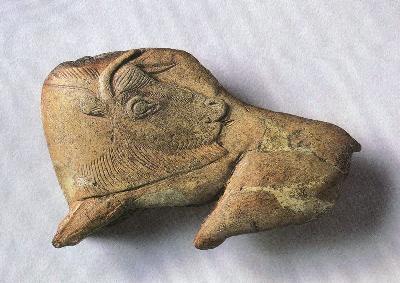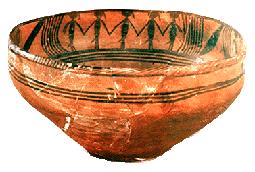| About China > History > Dynasties > dycontent |
|
|
Prehistoric Times
Fortunately, the development of science, especially modern archaeology, paleontology and geology, offer powerful insight to solving these mysteries.
In China, human fossils found in Wushan, Chongqing Country that are over 3 million years old are believed to be the remnants of the earliest human that lived in China. Also, large quantities of fossils were spread out over a number of other sites in China. Known as Yuanmou Man, Lantian Man, Peking Man and Upper Cave Man (Shandingdong Man), such discoveries provide sufficient evidence to substantiate the claim that China was one of man's birthplaces, as well as ancient Africa.
Archaeological and paleontological research in recent decades has proven that the appearance of man was the result of evolution, while primates are considered his ancestors.
About 10,000 years ago, humans entered the Neolithic Age. To adapt to the new circumstances, they moved away from mountainous areas and settled down in groups near water. Subsequently, houses were built, pottery was invented, primitive agriculture developed and thus man adopted a new lifestyle in permanent settlements. As stone grinding and drilling techniques became more efficient, the production of various stone tools became widespread with a greater dependence on their use. Forsaking a total reliance on hunting, man began to make a living by growing crops, specifically rice in the south and millet in the north.
Due to low productivity and an adverse environment, people had to live in groups and depend on their collective skills to survive. They worked together and shared the food they acquired equally. To facilitate the needs of survival and development, a fair, upright and capable person was chosen to lead the people in their work and to organize their defenses against invasions. This became a process whereby Yao, for example, recommended Shun, Shun recommended Yu and Yu recommended Gaotao, and so on. Later generations named this method of selecting a tribal head The Abdication System. This period, where egalitarianism was widespread, was characterized by peace, equality and the common ownership of wealth and historians referred to it as the Society of Great Harmony.
To survive in an often inhospitable environment, ancient people had to cope with various natural disasters. Many legends have been passed down from those times: "Yu the Great Fighting the Flood," for example, has special significance in China.
By the time the late primitive period had evolved, there were many clans and tribal groups living in China. Archaeologists have categorized them as the Huaxia Group, Eastern Tribes and Southern Tribes. The main group, Huaxia, comprised of both the Huangdi and Yandi tribes. In due course, the influence of the Huaxia Group, at the height of its power, extended to the Yangtze and the Hanshui river valleys. Later generations, such as the Yu, Xia, Shang and Zhou, were all descendants of the Huangdi. In this way, the Huaxia Group established a unique place in history because the Huangdi became the common ancestors of the Chinese nation.
With improved productivity, an individual was able to produce more than he could consume. This meant that neighboring clan captives were kept alive as slaves instead of being killed. The slaves were then obliged to work and their total output became the property of their owners. In this way, private ownership evolved. As more and more people became either owners or slaves, a class structure developed within the society, thereby replacing the former primitive Society of Great Harmony.
The Longshan Culture is a prime example of this period. To protect their own interests, the privileged classes abandoned the Abdication System and adopted a new political system and social regulations. After the death of Yu the Great, his son, Qi, killed the appointed successor and usurped power. In so doing, he established a new era of hereditary monarchy that subsequently ruled in China for nearly 4,000 years. This was when the Xia (21st-17th century BC) -- the first hereditary dynasty in China was born. |
||||||||
 |


